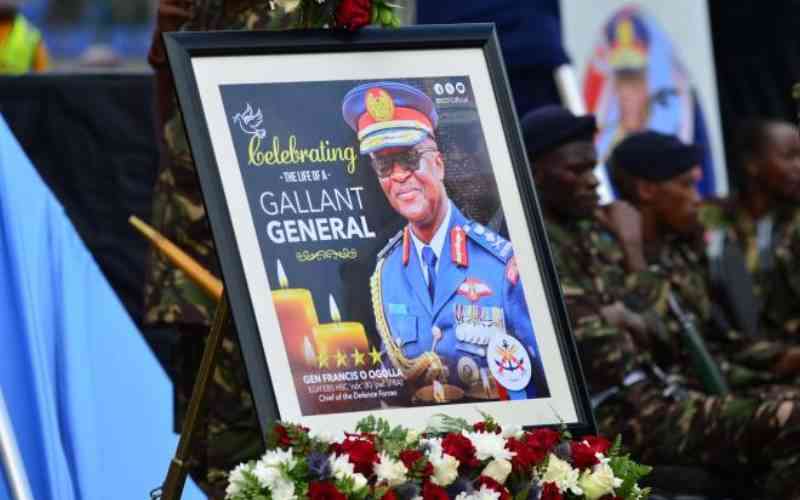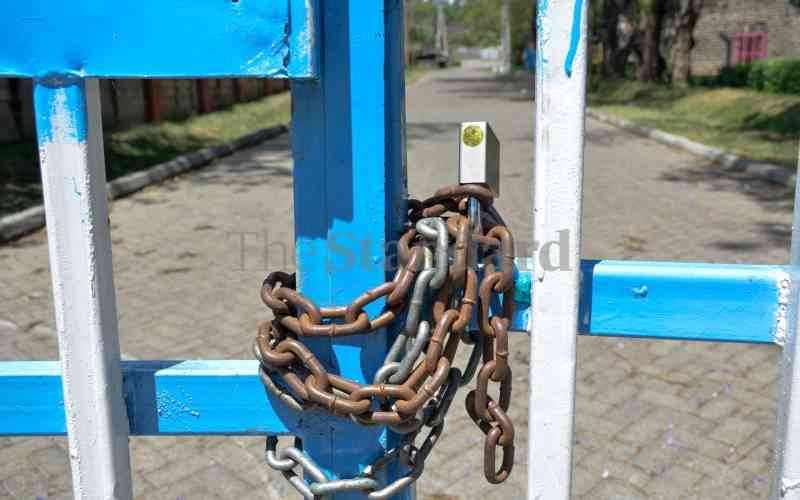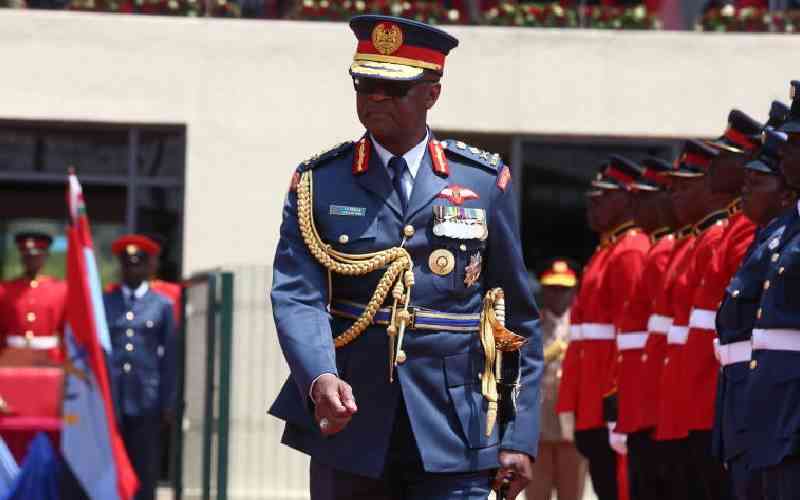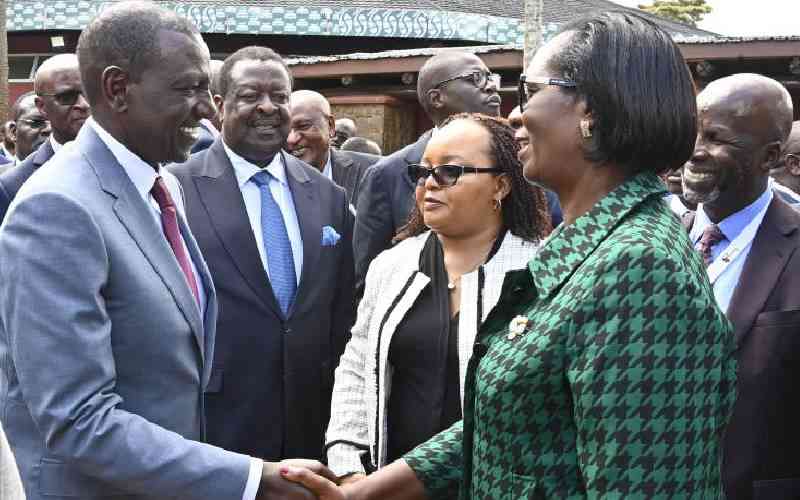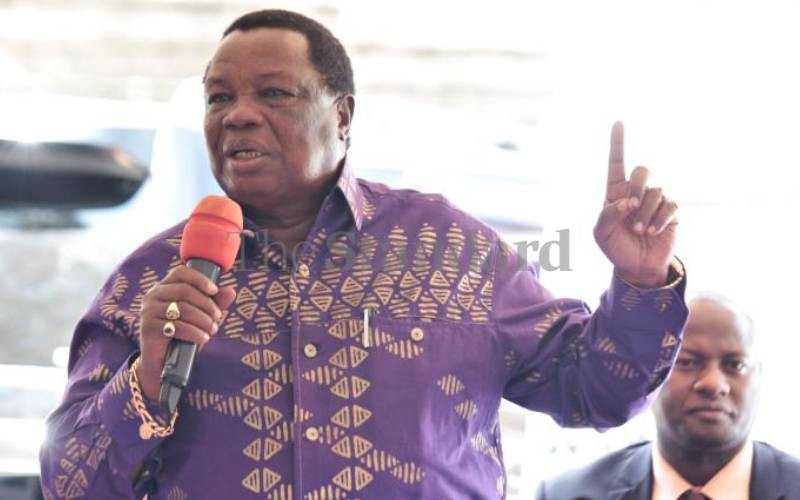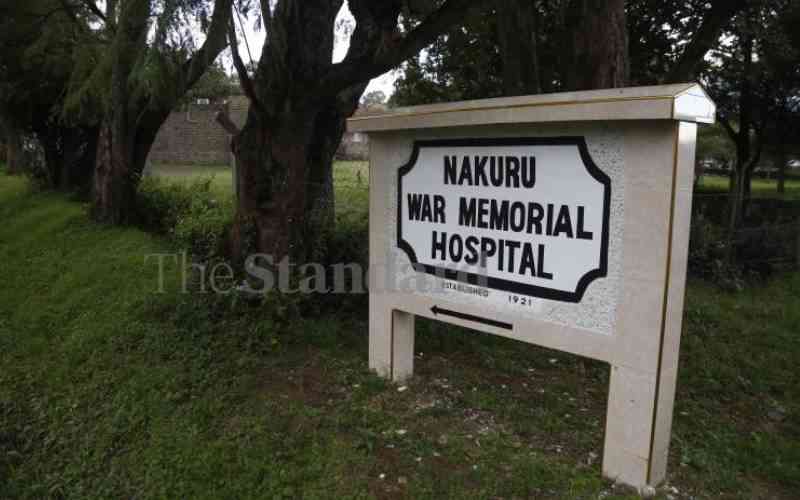
Attempts by the County Government of Nakuru to forcefully take land on which War Memorial Hospital stands introduces another twist in the 50-year-old controversy over the ownership of the medical facility.
Vested interests, whetting appetite for the prime land the hospital stands on in the posh Milimani Estate, has seen the escalation of the protracted dispute between the government and the hospital board of management.
On Monday, January 22, the hospital’s board of directors led by Chairman Roger Joslyn, director Dr Simon Mwangi, alongside three officials from the Ministry of Lands, were charged with 12 counts of fraud, forgery, making false documents and uttering them as genuine.
The criminal case scheduled for mention on February 18 and a civil litigation filed by the directors in the Environment and Lands court are expected to end the decades-old dispute.
However, the saga has ignited a bitter political war pitting Governor Susan Kihika against Senator Tabitha Karanja.
The hospital’s board has termed it as unwarranted interference with the affairs of the hospital by the government.
They received the backing of Senator Karanja, who is of the view that the takeover was unnecessary, and illegal and has exposed innocent patients to untold misery, and even led to deaths.
Kihika insists she will not relent from her fight against land grabbers in the county, claiming the management of War Memorial Hospital was illegally in possession of the land.
Though the hospital ownership was previously vested in Nakuru War Memorial Hospital Trust, which was the registered owner of the land, it was being managed by a private company limited by guarantee.
The Sunday Standard has learnt that before the promulgation of the 2010 Constitution, the previous firm had accommodated the then provincial medical officer of health and the provincial commissioner in the board.
The more than century-old health facility has 44 wards and attends to close to 60 patients daily, with a 300-strong workforce and five resident doctors.
The hospital is located in the up-market Mlimani Estate, a few hundred metres from State House Nakuru.
The 25-acre land has an open field between the State House and Lenana Primary School, where the presidential helicopters land.
The field also acts as a holding place for delegations visiting the State House and a parking bay for buses and Lorries ferrying the delegation.
There is a vacant 7-acre parcel of land that is said to have attracted a lot of interest from land speculators and private developers, who are believed to be behind the renewed push for the hospital to surrender the land.
Stay informed. Subscribe to our newsletter
The hospital is the leading private health facility in the South Rift region and has over the years, been the facility of choice for senior government officers, business executives and prominent members of the society in the region.
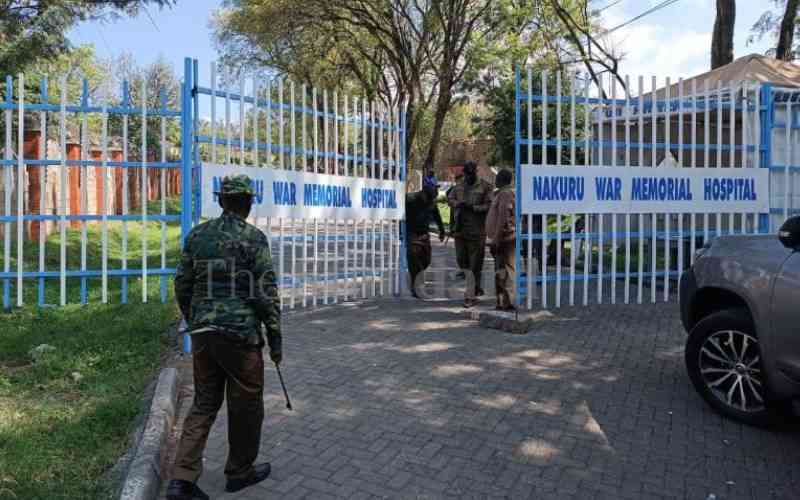
The hospital’s first brush with the government was in 1972 when the founding President Mzee Jomo Kenyatta verbally ordered that part of the private facility’s building be taken over by the government for the establishment of a public health facility.
However, high-level political intrigues and power games involving some influential government officials and white settlers obstructed the legal process that would have been the government fully taking over the hospital.
Despite the presidential directive, the government did not formalise the annexation. The buildings and the land remain the property of the War Memorial Hospital, which legally owned the title.
A retired civil servant privy to intrigues surrounding the hospital land saga told the Sunday Standard that the European settlers, who were angered by the presidential directive, regrouped and quietly lobbied the then Attorney General Charles Njonjo, who was sympathetic to their plight.
The officer said Sir Michael Blundell and his team of European settlers enjoyed a cordial relationship with the late Njonjo, who also had political scores with some provincial administration officials and politicians in Nakuru.
Records seen by The Sunday Standard show that the hospital’s board was chaired by Sir Michael Blundell, who had served as Agriculture Minister in the colonial government (between 1954 and 1955 and later between 1961 to 1962) and had previously served as Minister without portfolio to the Emergency War Council (between 1954 and 1955) during the Mau Mau uprising in the country.
Sir Michael was also the leader of the European settlers in Kenya following his election to the legislative council and had played a pivotal role in the Lancaster Conference talks, which led to the independence of Kenya.
He was the leader of the European members in the council between 1952 and 1954.
Blundell was among the level-headed British settlers whose assistance was sought by the British government to negotiate a middle-ground position with the African leaders, who were demanding the country’s independence.
The pre-eminence role he played in bridging the gap between the British settlers and African leaders made Sir Blundell regarded as the “architect of Kenya’s racial harmony and stability.”
He had, with the permission of Sir Patrick Renison, the colonial governor, met Mzee Jomo Kenyatta in prison to convince him to abandon his militant position against the British settlers in Kenya.
“It is also on the intervention of Sir Michael Blundell that the newly independent state adopted the policy of allowing white farmers who wished to remain in Kenya after independence not to be forced to leave and also those who wanted to leave be allowed to dispose of their land on a willing-seller, willing buyer basis,” said the retired state counsel, who wished not to be named for fear that he might be seen as antagonizing the government of the day.
The retired official, who had joined the government as an administrative secretary and was attached to the State Law office, then headed by Njonjo, further said that a petition by a section of Nakuru leaders to have the government take over the hospital was submitted to the then Minister for Health, Isaac Omolo Okero.
The former civil servant further said that the request by the health minister to have the legal separation of the hospital was rejected by Mr Njonjo.
“Mr Njonjo did not give any directive to commence the legal process of annexing the hospital, and that is how Nakuru War Memorial Hospital ended up retaining the title for the whole land, and technically owning the building,” the retired officer added.
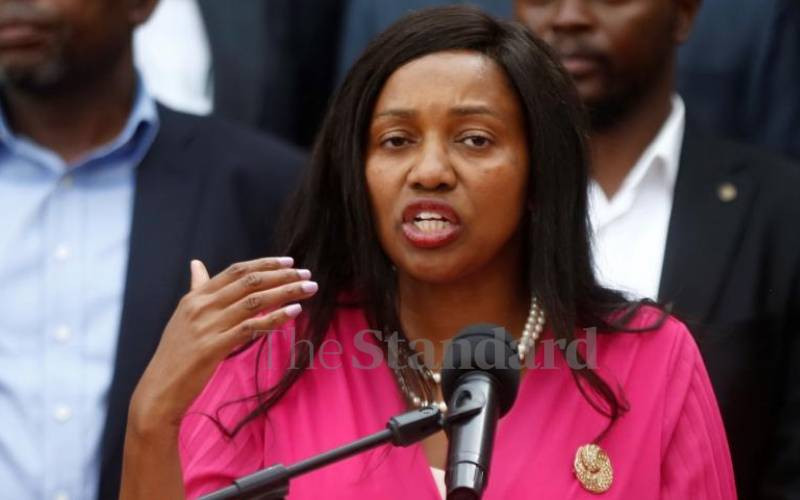
A leading Nakuru medical practitioner, Dr Isoe Ochoki, who practised at the Nakuru PGH Annex and War Memorial Hospital, told The Sunday Standard that he gathered from his seniors that Njonjo objected to the takeover of the hospital by the government as leaders demanded.
Following the presidential directive, the hospital was divided into two, with the annexed part being renamed Nakuru Provincial General Hospital Annex, a public facility attached to the government-owned provincial general hospital.
The hospital had two wings connected by one roof, with the government taking over the portion that had a one-storey building, leaving the other to the War Memorial Hospital.
The late President Kenyatta’s action was prompted by a petition submitted to the government by a network of influential government officials in Nakuru who opined that the facility was under-utilized and inaccessible to the African people.
A former chief in Nakuru Municipality, Benjamin Wambugu, told the Sunday Standard in a recent interview that there was a feeling amongst senior government officials in Nakuru that the amenity wing at the Provincial General Hospital (now Nakuru Level 5 Hospital) was small and did not offer the kind of privacy commensurate with their status.
Wambugu added that the hospital also needed to be expanded to cater for the increasing number of people seeking treatment at the facility.
He added that the government officers further felt that the fee charged at the War Memorial Hospital was far beyond the reach of the ordinary citizens, hence the need for a health facility that catered for the interest of the Africans as the country had attained independence a few years ago.
Wambugu said that civil servants felt the War Memorial Hospital was expensive.
Dr Mwangi, the current hospital director, said that at the time of the split, the overnight bed charges ranged around Sh120 while physiotherapy charges were Sh20.
Wambugu said that the newly created PGH Annex was offering medical services for senior government employees who had NHIF cards, while ordinary citizens continued being served at the provincial general hospital.
“The directive by the late President Jomo Kenyatta was in tandem with the Africanisation process, where public institutions managed by the colonial government were being opened up to accommodate Africans,” the former chief added.
Wambugu further recalled the opening of public institutions to all citizens was also part of the integration and harmonization process to create social cohesion and stability in the newly independent state.
“The government shortly after established the Kenya Africanisation Bureau, which handled the integration process.”
“The schools which previously catered for the whites such as Lenana School, Nairobi School and even Nakuru School ( current Nakuru High School and Nakuru Girls High School), were ordered to admit students from all racial and ethnic backgrounds),” Wambugu added.
The retired chief added that after the hospital was annexed, the composition of the board was also changed to accommodate senior government officials, including the provincial medical officer and the provincial commissioner, to cater for the interest of the general public.
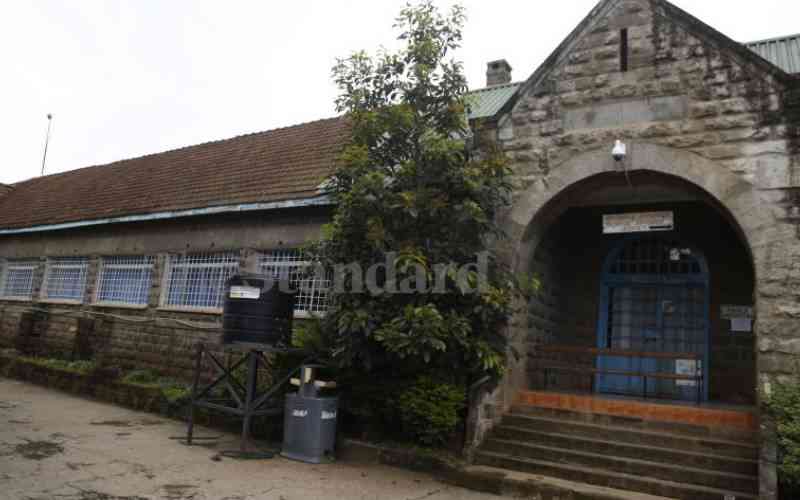
“ By having the government officials in the board, it was meant to have reflected the changed political order as the institution previously appeared elitist and catering for European interests,” he narrated.
Available records indicate that the institution, which was established in 1921, was named Nakuru War Memorial Hospital to honour those who died in the First World War (1914-1918).
However, a temporary hospital was opened in June 1919 after the acquisition of the deserted military building, pending the construction of a modern and permanent hospital.
The fund for the construction of the hospital was set up, including the government contribution of Rs 41,000 ( Indian Rupees).
The rest of the contribution was to be realised from close to 50 subscribers, mainly from the settler community who pledged to support the project and made their financial pledges.
According to a public notice issued by A.C. Rose, the secretary to the hospital’s management committee, on March 1, 1920, the expenses of running the hospital were to be met by subscribers and contributions by the colonial government.
Before the establishment of the hospital, the Acting Governor had submitted a detailed report to the Secretary of State for the Colonies, Right Honourable Viscount Milner.
The report had been prepared by the Principal Medical Officer, and contained information on the working of the European Memorial Hospital at Nakuru, together with a schedule of fees charged, and a copy of the drawings from the new hospital.
The acting governor pleaded with the Colonial Secretary to provide financial support for the construction of the new facility.
Throughout the colonial period, the hospital catered for the medical needs of the European settlers and continued to serve the elite section of the society upon independence.
Last week, after he was charged with alleged fraud, Dr Mwangi and the other board members said they had experienced difficulties in having the lease renewed as some influential government officials had written a letter to the lands officer about six years ago objecting to the hospital being issued with a new lease.
Mwangi added that previous attempts to have the PGH Annex Hospital pay rent to War Memorial Hospital had been snubbed by both the national government and the county government.
 The Standard Group Plc is a
multi-media organization with investments in media platforms spanning newspaper
print operations, television, radio broadcasting, digital and online services. The
Standard Group is recognized as a leading multi-media house in Kenya with a key
influence in matters of national and international interest.
The Standard Group Plc is a
multi-media organization with investments in media platforms spanning newspaper
print operations, television, radio broadcasting, digital and online services. The
Standard Group is recognized as a leading multi-media house in Kenya with a key
influence in matters of national and international interest.
 The Standard Group Plc is a
multi-media organization with investments in media platforms spanning newspaper
print operations, television, radio broadcasting, digital and online services. The
Standard Group is recognized as a leading multi-media house in Kenya with a key
influence in matters of national and international interest.
The Standard Group Plc is a
multi-media organization with investments in media platforms spanning newspaper
print operations, television, radio broadcasting, digital and online services. The
Standard Group is recognized as a leading multi-media house in Kenya with a key
influence in matters of national and international interest.



